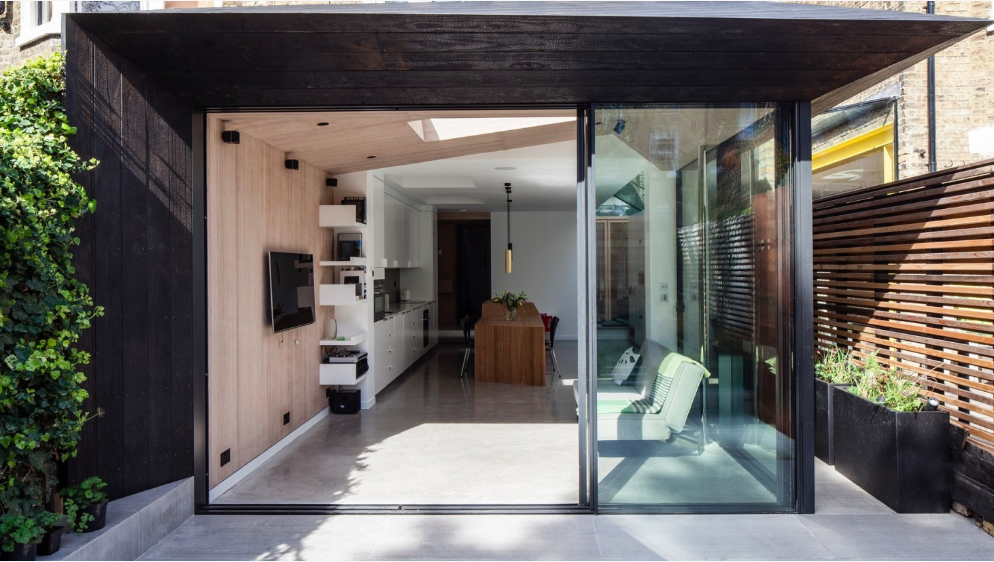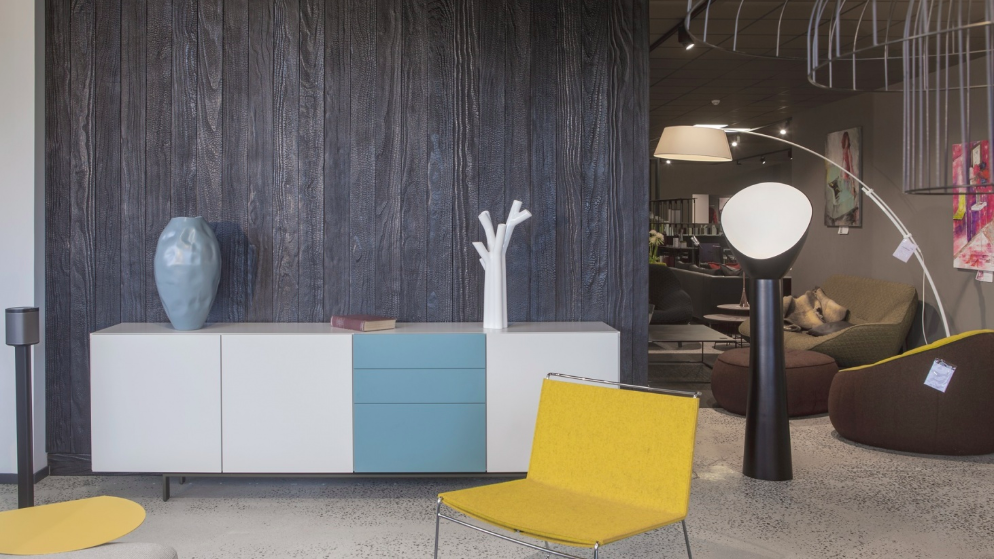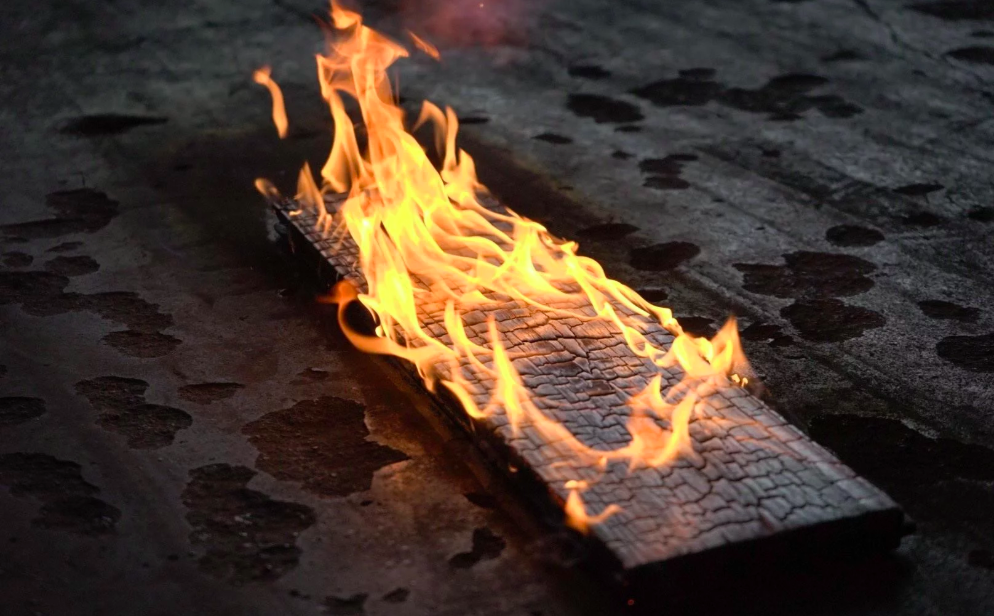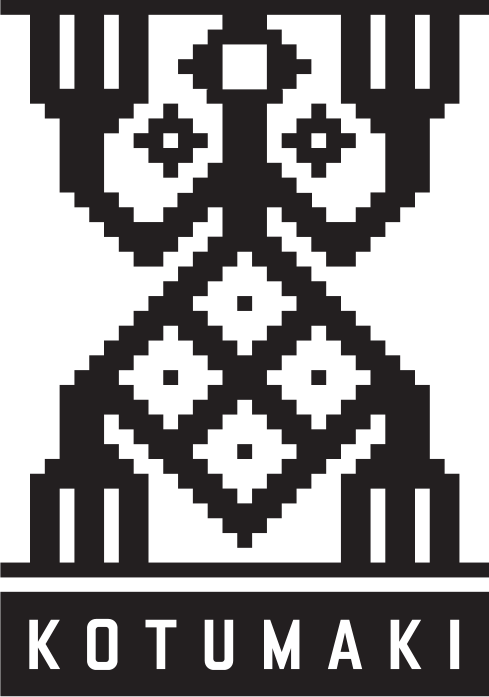Trends in architecture don’t alway revolve around new ideas, but occasionally nod to the past by bringing ancient techniques back to life with improved technology. A growing trend that is a perfect example of this is Shou Sugi Ban.
Shou Sugi Ban is an ancient Japanese architectural technique that was used to preserve wood by charring the surface with a hot flame. Shou Sugi Ban is also known as Yakisugi and traditionally was performed on Sugi wood, which is a Japanese cedar. The process involved charring the wood, cooling it, cleaning off any soot or burnt debris on the surface, and finally finishing the boards with an oil.
Although you may consider fire to be an enemy of wood, only causing its degradation, Shou Sugi Ban actually enhances durability and is a natural means of preserving wood without chemicals, paints and other surface treatments.
As a current trend in modern architecture you can expect Shou Sugi Ban to be seen in both exterior and interior settings, even being used on furniture and decor. However, where Shou Sugi Ban really shines is as exterior siding or interior wall accents. Despite being a very old method of treating wood, it is flexible enough to look stunning in both modern and rustic settings.
Here are 6 reasons why these beautiful dark walls will continue to be a growing trend in today’s architectural design.
Natural Durability Means Shou Sugi Ban is Appropriate for Exteriors

Originally Shou Sugi Ban was used on the exterior of Japanese buildings and it’s actively used in both exterior and interior design applications. Ironically it is the damage that is done by the fire charring that actually strengthens and makes Shou Sugi Ban a great choice for homes or buildings.
When fire is applied to wood boards, the burning process creates a thin layer of carbon on the wood surface, which is what we see as burnt wood. This carbon layer protects the interior wood in very much the same way that stains or sealants would. Shou Sugi Ban siding is very low maintenance and naturally resistant to insect as well as moisture damage. These benefits are made even more apparent when Shou Sugi Ban is used to enhance modified wood boards, which already are more dense, durable and long-lasting than many other wood types and species.
The Shou Sugi Ban process is environmentally friendly and doesn’t contribute to harmful pollution. There are no chemicals present in this siding to potentially leach into the environment and it’s entirely safe for homes with children. Shou Sugi Ban is a sustainable means of naturally protecting exterior siding and once its lifespan has been reached, can be recycled or disposed of without any concern of harming the environment, like one might have when disposing of treated wood.
Shou Sugi Ban is an Excellent Alternative to Black Stains or Paints

Going for a bold look is easily done with black or other dark-toned surface treatments, such as stains and paints. Depending on the route you go you may still be able to see some of the underlying wood grain, however many times painting or staining wood masks the beauty of the natural grain. Another downside of using these types of surface treatments is that they require maintenance, regular reapplication and may contain harmful ingredients.
The green movement is steadily growing in the world of architecture and building design, with more and more people looking for natural, safe means of achieving the same looks. Shou Sugi Ban allows you to get a beautiful dark finish for your project, without having to rely on toxic surface treatments that can be harmful to the people and environment around it.
Shou Sugi Ban is a much safer option, even when compared to low VOC treatments that are fairly popular. The overall safety and low maintenance of Shou Sugi Ban makes it ideal for both public and private spaces. Shou Sugi Ban adds a very unique visual appeal to any property, that enhances and complements a wide range of design styles.
Shou Sugi Ban Makes Complementing and Contrasting Mixed Materials Simple

Knowing what materials to mix within designs can be a challenge; it can be difficult to know what will work together and what won’t. Shou Sugi Ban wood is a material that makes this task simple, because it works with so many different building materials to help create virtually any design style.
The W Hotel in Boston, Massachusetts, seen here, uses Shou Sugi Ban Kebony in combination with metal, mirror and marble to create a high-class look of luxury. Shou Sugi Ban also works incredibly well with stone and other wood of varying natural tones, to create a more charming and rustic space. Whether you want dramatic, warm, modern or traditional, Shou Sugi Ban is versatile enough to complement any style.
Shou Sugi Ban Comes in a Variety of Textures and Tones

Although charring wood may sound simple enough, there are actually many different techniques of creating Shou Sugi Ban, which results in many different textures and tones to chose from. If you’re looking for something with grit and character, something to make a bold statement, perhaps you’d prefer a Shou Sugi Ban wood with a thick char and deep black color. If instead your design calls for something a bit smoother, with a cleaner finish, a brush Shou Sugi Ban would be ideal. There are even series that lightly char and distress the wood to create a variety of tones within a single piece, while still maintaining the superior performance characteristics and durability that the burning method brings.
While there are many different Shou Sugi Ban options out there, it is important to remember that not all products are the same, because not all wood burns the same. Some species of wood that have a weaker grain pattern to begin with can look some what bland after burning, overpowered by the black char. This is why wood like Kebony, is often more preferred for it’s bolder, grain rich appearance after the Shou Sugi Ban burning technique is applied.
Shou Sugi Ban Siding is Limitless in Patterns and Designs

One of the best things about Shou Sugi Ban is that it’s real wood siding, which means the designs and patterns possible are virtually limitless. Shou Sugi Ban can be installed in a variety of different ways, making it ideal for creative siding and wall covering designs.
An excellent example of using Shou Sugi Ban in a creative way is using thin cut boards in a diagonal pattern, as seen on the exterior of this private home. Part of ancient as well as modern Japanese architecture is the use of thin cut boards, which is enhanced by the look of charred wood. The variety of tones the Shou Sugi Ban Kebony wood delivers adds a depth and maturity to the property that completes the look.
With Shou Sugi Ban you can get the look you want, be it narrow slats in a diagonal installation or wider slats in a horizontal shiplap appearance, with a unique appearance and weathering properties that will help your design last, whether it be interior or exterior.
Shou Sugi Ban Enhances the Natural Beauty of Wood

Shou Sugi Ban is ideal for applications and designs that want the character of wood, with a little more intrigue. The different charring methods work to highlight the natural grain, making it a great complement to traditional wood, as well as the perfect contrast to more modern materials like metal and glass. The deep grain, highlighted by the Shou Sugi Ban technique is a simple way to create a one of a kind look that is sure to make a lasting impression.
Whether it be used in an interior or exterior application, Shou Sugi Ban wood has superior performance characteristics that will enable your design to live longer and remain beautiful.
The beauty of these charred black walls and its natural durability is making Shou Sugi Ban more and more common in building designs across the globe. Its overall ease of care and the option of environmentally friendly boards like Shou Sugi Ban Kebony will further help to elevate Shou Sugi Ban as the first choice in wood siding.
Author: https://kebony.com/en/blog/6-reasons-why-shou-sugi-ban-hottest-trend-architecture




